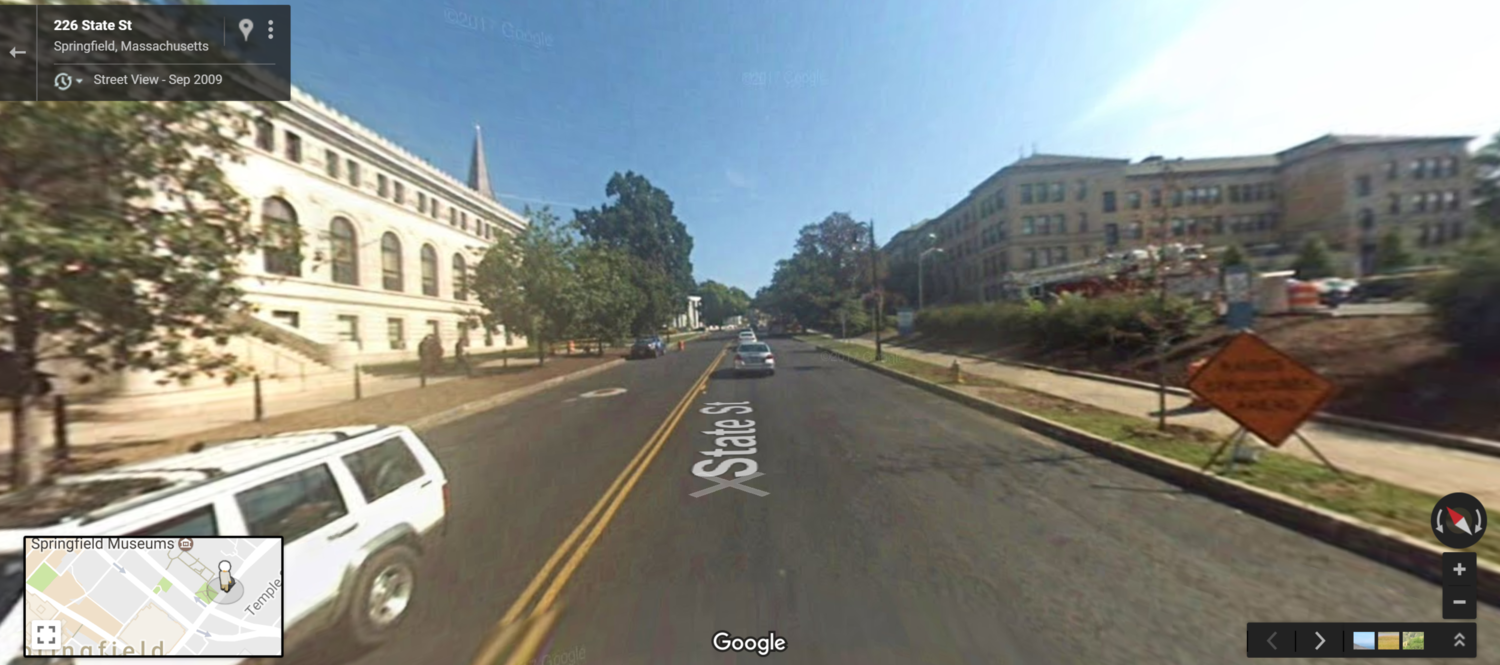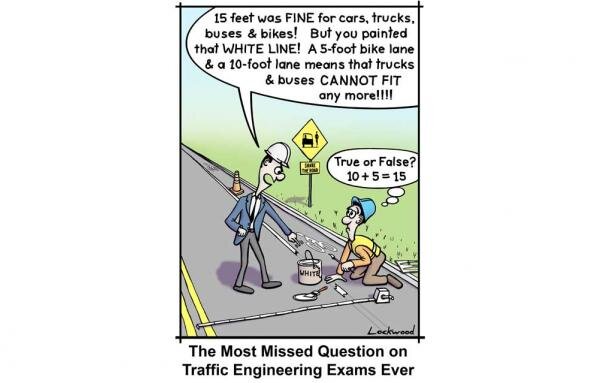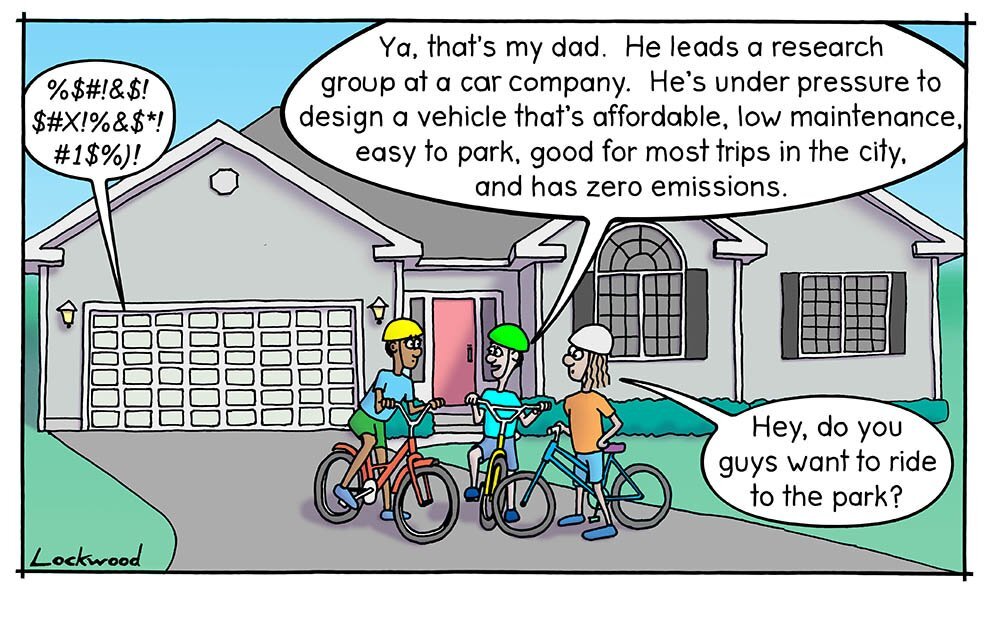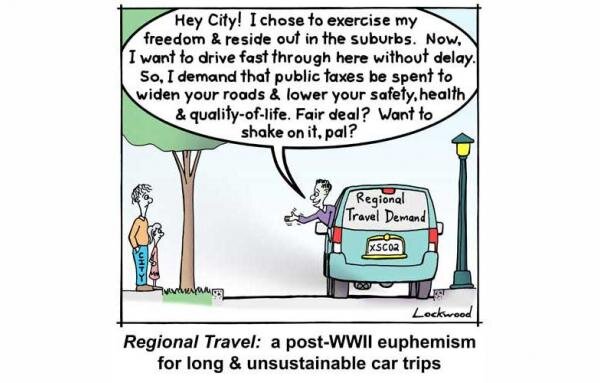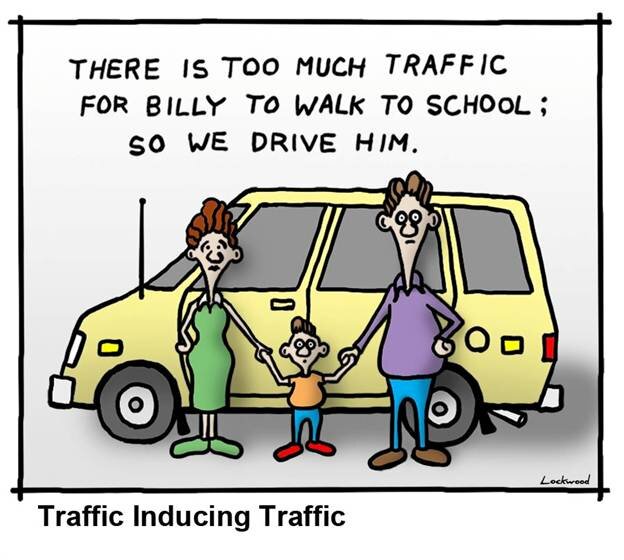SUPPLEMENTAL MATERIALS
Chapter 1: Embedded Values
Key Quote
“The burden and responsibility of making value decisions should not rest with technical professionals. Traffic engineers are incapable of representing the complexity of human experience that needs to be considered in a street design.” — Click to Tweet
The Crossing at State Street (Springfield, MA)
The crossing at State Street in front of the Central Library has long been known to be dangerous. The city of Springfield acknowledged the danger by removing the mid-block crossing and taking steps to discourage direct crossings, including adding shrubs and a decorative fence in front of the library and changing the alignment of the stairs to the parking lot across the street.
They acknowledged the danger, but took only superficial measures to address it.
Here’s how this crossing has changed over time. Note how the patrons of the library, instead of being recognized as the primary design consideration for this section of street, are treated like a nuisance to be fenced off, minimized, and ignored.
It was obvious for all to see that the steps the city took to address the dangers with this crossing were inadequate. When the most recent project on State Street was completed, Xela Shultis, who was a teenager at the time, created a witty video documenting the reality of how people use State Street.
Spoiler: It’s nothing like the design suggests they should.
Of course, people cross State Street in the most logical place - right in front of the library, right where they always have. It took a teenager just a few minutes to demonstrate this, a truth knowable to any who bother to inquire.
The people of Springfield do not conform to the plans of the design engineers because they are not hypothetical people. They are real humans, and it is insulting for those living in a urban area to have to walk minutes out of their way to wait at a traffic signal when they can easily cross the street right in front of them.
The quickest path between two points is a straight line. The people of Springfield do what is logical, easily predictable, and constantly observable. This should surprise nobody.
Anyone interested in understanding how people use State Street can quickly discern what is going on. The desire lines — the paths people make with continual use — run deep.
Desire Path in 2012, Google Street View
Desire Path in 2016, Google Street View
Desire Path in 2017, Charles Marohn
“We cannot in good conscious conscience blame Sagrario Gonzalez for the tragedy that occurred on State Street. She was navigating a space that was, at best, indifferent to her and the children’s safety. At worst, it was outright hostile. ”
Marohn’s Reaction Following the Crash
Charles Marohn wrote about the crash that killed Destiny Gonzalez the day after it happened. Going back and reading that post from 2014 (Just Another Pedestrian Killed), his anger is visceral. Here are some quotes that give context to why Confessions of a Recovering Engineer focuses on State Street in Springfield.
“They [the transportation engineers] systematically forgive the mistakes of drivers who stray from their lane or go off the roadway by designing systems where these common mistakes are anticipated and compensated for. They systematically show indifference to the easily anticipated mistakes of non-drivers.”
The scene on State Street after the Gonzalez family was struck.
“Professional engineers claim that they cannot alter human behavior with their street designs. Despite this, the engineers in this situation – knowing there was an obvious problem – as well as many others in similar situations, put their brains to work to come up with all kinds of ways to attempt to alter human behavior, but only for those humans outside of their automobiles. For humans not in a car, we erect fences, hedges and other barriers to get them to go where we think best. Which is it, engineers? Are we behavioral scientists or not?”
“I’m fed up with people being killed because my profession contains a bunch of dogmatic idiots. I’m sure the response of some will be: But Chuck, the driver was drunk, this isn’t the engineer’s fault. Ridiculous. We consider the drunk when it suits our purposes — the free flow of traffic — and ignore them when it doesn’t. That’s the sign of a broken moral compass.”
You can hear Marohn, in the day after the crash, speaking with Strong Towns Board Members Andrew Burleson and John Reuter about State Street and the death of Destiny Gonzalez.
What are the values expressed in our street designs?
“When engineers do not recognize their own values and how they are being projected in the words they use, we must do that for them by correcting their language to remove the bias.”
Supplemental Reading: “Design Speed is a Value Statement,” by Charles Marohn
Ian Lockwood PE is a Livable Transportation Engineer with Toole Design Group who specializes in active transportation, place-making, and helping cities through collaborative planning, design and engineering. Ian’s cartoons are intended to spur discussion, raise issues, challenge conventionality, and occasionally cause the odd smile. You can follow Ian on Twitter at @IanLockwoodPE.
A word on Destiny A. Gonzalez
The tragic death of Destiny Gonzalez was a life-changing moment for Charles Marohn and the Strong Towns movement. How much more so for the people who knew and loved her? In this obituary, we get a glimpse of how Destiny will be remembered by her loved ones. We share it here, humbly, out of respect for the Gonzalez family and in Destiny’s memory.


